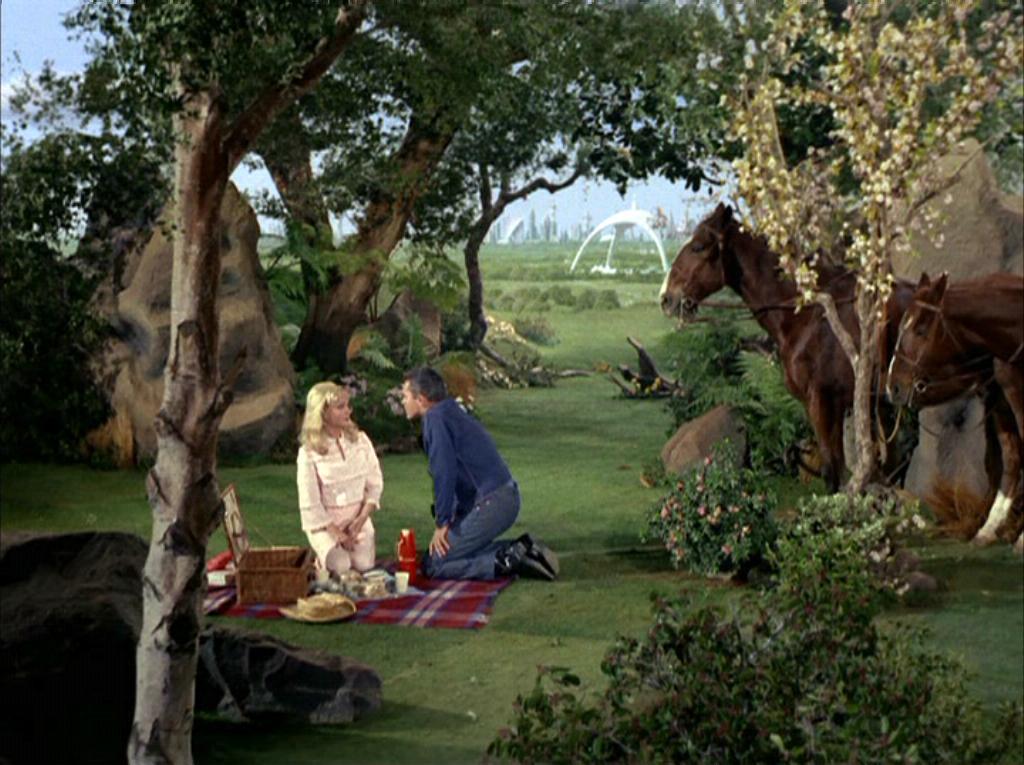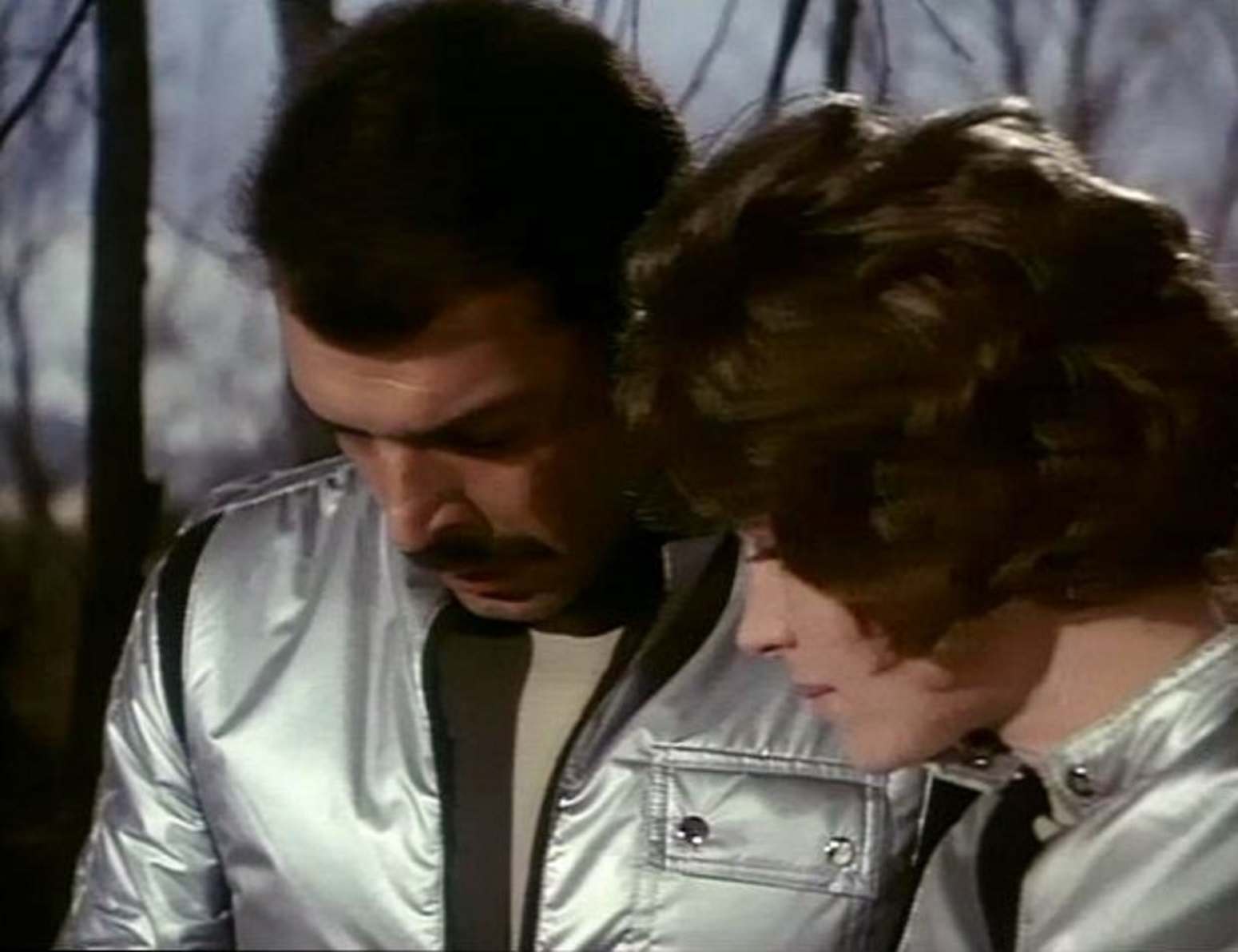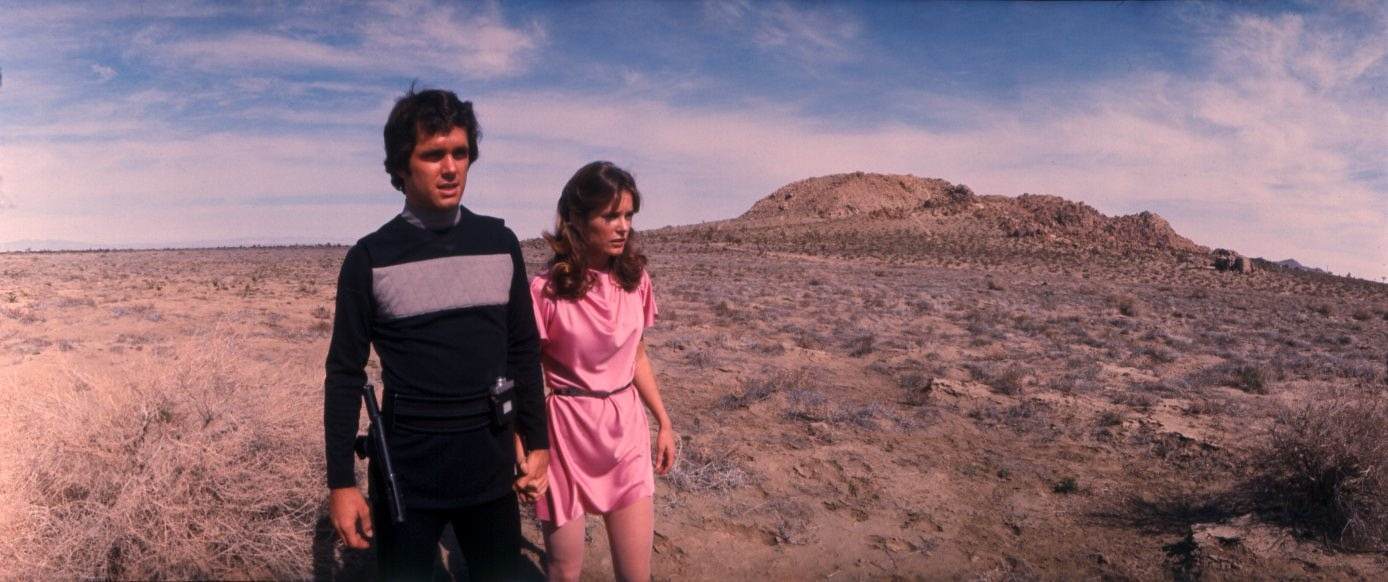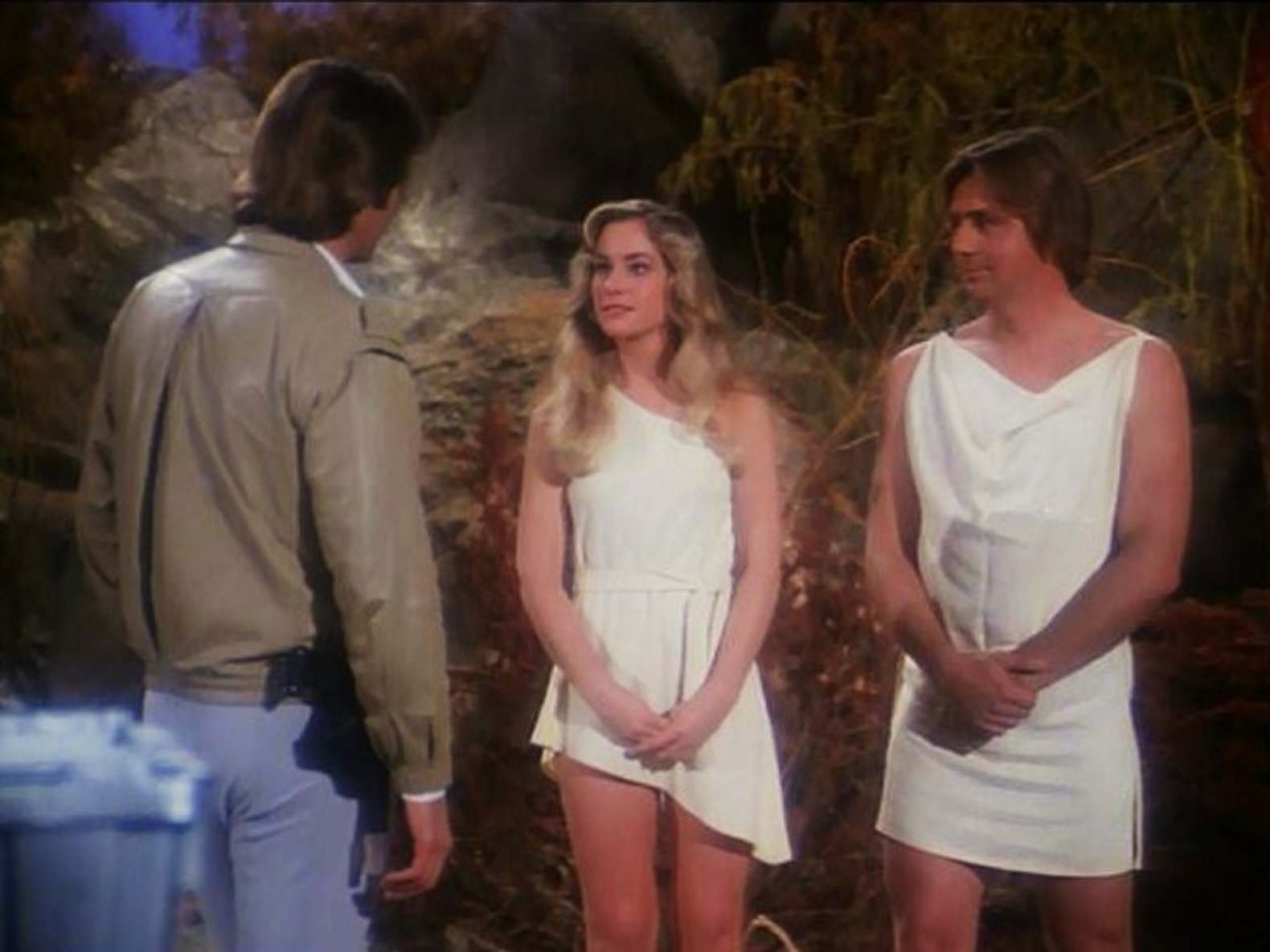The Biblical story of Adam and Eve depicts the first human couple in history. The duo was created by God to live in the Garden of Eden, but expelled after tasting fruit from the forbidden Tree of Knowledge. The Book of Genesis enumerates the children and descendants of Adam and Eve, our ancestors in human generations.
But significantly, science-fiction television has often re-written the Adam and Eve story, perhaps because it is a tale of new beginnings, a kind of origin story.
The Adam and Eve paradigm appeared memorably on two episodes of Rod Serling’s The Twilight Zone (1959 – 1964).
In “Two,” an apocalyptic war has destroyed civilization, leaving only two survivors. One is an American soldier, played by Charles Bronson. The other is a Russian soldier, played by Elizabeth Montgomery.
In a ruined metropolis, these individuals eye each other suspiciously for a time, unable at first to let go of the hatred that fueled their global conflict. Over time, however, the duo accepts their situation, and each other.
In the episode’s denouement, the female soldier – wearing a wedding dress she has found in an abandoned store — and the male soldier march off together. It is clear they will begin the human race a second time, as Adam and Eve Mark II.
“Probe 7 Over and Out,” another Twilight Zone episode, follows a very similar trajectory. A male soldier, Cook (Richard Basehart) lands his spaceship on a habitable world, only to learn that his home planet has been destroyed in a nuclear war.
As he familiarizes himself with his new world, Cook encounters another alien, a beautiful woman refugee from the planet “Norda.” He introduces himself as Adam Cook. She is Eve Norda. They call the planet “Irth,” and share a seppla (apple) in a garden.
Star Trek’s (1966 – 1969) original pilot, “The Cage” offers a variation on the Adam and Eve story too. Here, Captain Pike (Jeffrey Hunter) is captured by the aliens of planet Talos IV. The Talosians hope that he will mate with another human, Vina (Susan Oliver) and that together they will become the father and mother of a new human race; ones destined to dwell on the desolate planet surface and perform the hard physical labor that the fragile Talosians cannot.
Although the Talosians tempt Captain Pike with visions of Vina in different settings — and indeed as different women — he refuses to be an accomplice in the plan to create a race of human slaves. One such fantasy involves Captain Pike and Vina in a picnic in a kind of garden, subtly evoking the Adam and Eve story.
Intriguingly, Star Trek’s second pilot, “Where No Man Has Gone Before” also features resonances of the Adam and Eve tale. In this episode, Kirk must prevent the birth of a new super-human race. The Adam and Eve of that race are Gary Mitchell (Gary Lockwood) and Dr. Dehner (Sally Kellerman), powerful “God” like beings with telepathic and telekinetic powers. Several scenes show Dehner and Mitchell in a garden, sampling alien fruit.
The final episode of Space: 1999’s Year One, “The Testament of Arkadia” also features an unmistakable Adam and Eve element.
In this installment, Earth’s wandering moon stops dead in space near the planet Arkadia. Upon exploration of the planet, Commander Koenig (Martin Landau) and his Alphan reconnaissance team discover a cave of human skeletons and Sanskrit writing.
The writings describe how the ancient Arkadians brought the seeds of life to a distant planet, Earth, some 40,000 years earlier. Before long, Two members of Koenig’s team, Luke (Orso Maria Guerrini) and Anna (Lisa Harrow) become obsessed with the idea of completing the cycle; of restoring life to Arkadia, a world which has been rendered lifeless in a nuclear war.
Over Koenig’s objections, Luke and Anna set out on their mission, becoming Arkadia’s new Adam and new Eve in the process.
A second season episode of Space: 1999, titled “New Adam, New Eve” returns to the familiar trope. In this case, the God-like alien called Magus (Guy Rolfe) captures Commander Koenig, Helena Russell (Barbara Bain), Maya (Catherine Schell) and Tony Verdeschi (Tony Anholt) and brings them to a garden spot on “New Earth,” where they can mate and begin a new human race.
The wrinkle in the plan, however, is that Magus won’t allow the Alphans to choose their own lovers. He wants Koenig and Maya together, and Tony and Helena as a couple. So these Adams and these Eves rebel against “God.”
Logan’s Run: The Series (1977) also offers an Adam and Eve-like premise, with Logan (Gregory Harrison) and Jessica (Heather Menzies) “cast-out” from the Domed City and wandering the wasteland in search of Sanctuary, a place of safety where they can live as “normal” human beings and even start families. In one episode, “The Collectors,” a fake Sanctuary is explicitly visualized as a kind of garden location, harking back to the Biblical Eden.
Similarly, the second season Buck Rogers in the 25th Century (1979 – 1981) episode “The Crystals” involves a landing party from Searcher, led by Buck (Gil Gerard), encountering a beautiful, innocent girl, Laura (Amanda Wyss). She awakes on the planet alone, confused about her identity. She soon learns that the shambling mummy monster threatening the landing party’s survival will actually transform into her equally innocent male mate, and that they shall start life anew on the planet. They are the Adam and Eve of a distant world, but in this re-telling, Eve is born first.
The premise of both Battlestar Galactica incarnations (1978 and 2004…. has nibbled around the edges of the famous Adam and Eve story too. The Commander of the Galactica is named Adama (a variation of Adam), and in both variations of the story, he delivers his fleet to a would-be paradise called Earth.
In the Ron Moore remake, the series ends with the humans forsaking knowledge – their technology – and living in a simple paradise to breed with the native inhabitants. In short, the members of the Rag-Tag fleet are all Adams and Eves; our ancestors here on Earth.
Would you like to support Flashbak?
Please consider making a donation to our site. We don't want to rely on ads to bring you the best of visual culture. You can also support us by signing up to our Mailing List. And you can also follow us on Facebook, Instagram and Twitter. For great art and culture delivered to your door, visit our shop.















